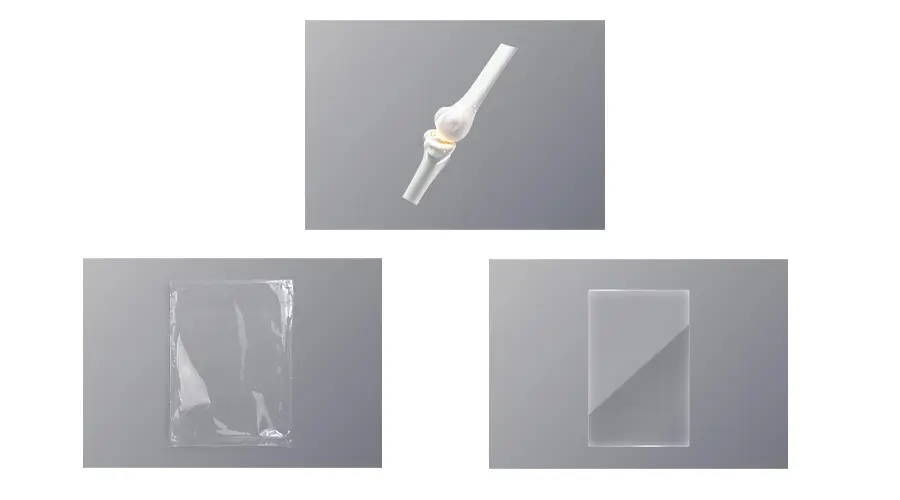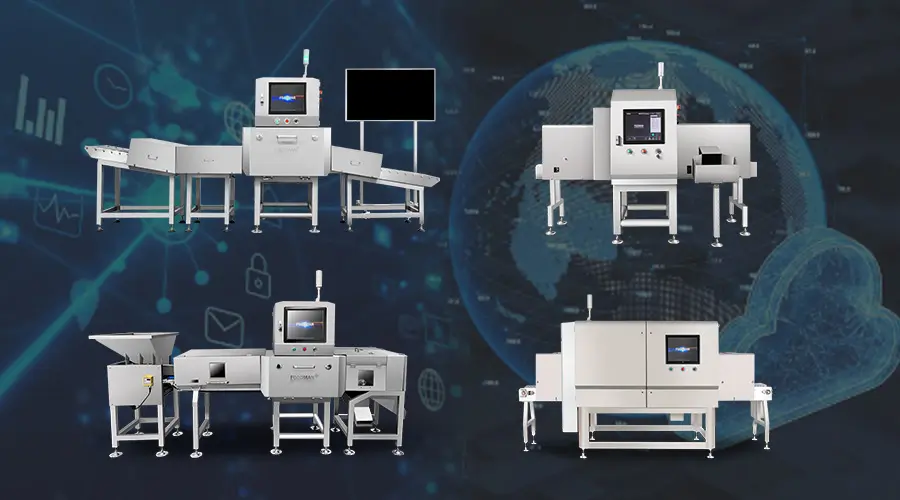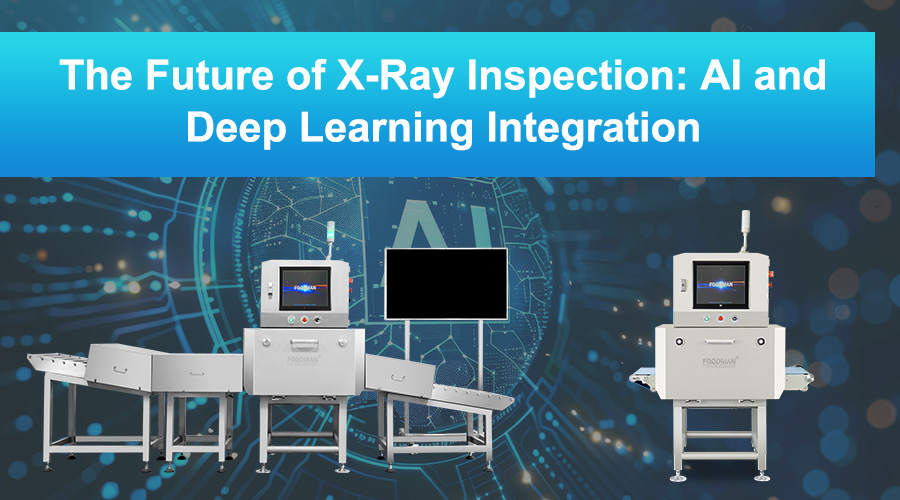Introduction to the X-Ray: AI-Driven Solutions for Enhanced Food Safety
Overview of X-Ray Inspection Technology in Industrial Applications
X-Ray inspection systems have become essential in modern industrial applications, especially in the food industry, where safety and quality control are top priorities. These advanced X-Ray inspection machines help detect foreign contaminants such as metal, glass, stone, bone, and dense plastic that traditional detection methods might miss. By using high-energy radiation, food X-Ray inspection equipment provides real-time, non-destructive analysis, ensuring that only safe and high-quality products reach consumers.
The Evolving Role of AI and Deep Learning in Quality Control
With advancements in artificial intelligence (AI) and deep learning, X-Ray food inspection systems have evolved beyond basic detection. AI-powered X-Ray inspection for the food industry can now analyze vast amounts of image data, recognize patterns, and continuously improve detection accuracy. This reduces false positives and enhances efficiency, making food X-Ray machines an indispensable tool for modern food manufacturers.

Importance of Automation and Intelligent Inspection
Automation is transforming quality control by integrating X-Ray machines for food inspection with intelligent inspection systems. AI-driven analysis enables faster, more precise contaminant detection, while automated rejection systems minimize human intervention. By leveraging X-Ray inspection systems, manufacturers can enhance food safety, streamline production, and comply with stringent industry standards.
As the food industry continues to embrace intelligent inspection technologies, food X-Ray inspection will play a vital role in ensuring safety, efficiency, and compliance, paving the way for the future of automated quality control.
The Advancements in X-Ray Inspection Technology
Traditional X-Ray Inspection vs. AI-Enhanced X-Ray Inspection
Conventional X-Ray inspection systems rely on predefined rules and operator interpretation to detect contaminants and defects. While effective, these systems are limited in their ability to differentiate between complex materials and accurately identify low-density foreign objects.
AI-enhanced food X-Ray inspection machines leverage deep learning algorithms to analyze vast amounts of image data, continuously improving their ability to identify contaminants and defects with greater precision. This reduces false positives and enhances the reliability of inspection processes.
Introduction to Dual-Energy X-Ray and High-Resolution Detectors
Modern X-Ray inspection machines incorporate advanced technologies such as dual-energy X-Ray imaging and high-resolution detectors. Dual-energy X-Ray technology enhances the detection of contaminants like bones, plastics, and glass by differentiating between materials based on their absorption properties. This is particularly valuable for food X-Ray inspection, where identifying non-metallic contaminants is crucial.
High-resolution detectors improve the clarity of inspection images, allowing AI algorithms to detect even the smallest anomalies. These advancements make X-Ray food inspection systems indispensable for industries requiring high-precision quality control.

The Role of Deep Learning in Improving Defect Detection
Deep learning enables X-Ray inspection systems to recognize patterns, classify defects, and adapt to new types of contaminants. Unlike traditional methods, which rely on static parameters, AI-driven X-Ray inspection machines continuously refine their detection capabilities by learning from real-world data.
AI and Deep Learning in X-Ray Inspection
How Deep Learning Enhances Image Analysis and Defect Recognition
Deep learning algorithms analyze X-Ray images by identifying subtle differences in texture, density, and composition. These AI-driven systems can differentiate between acceptable variations in product composition and actual defects, improving accuracy and reducing false alarms.
The Use of Intelligent Algorithms for Foreign Body Detection and Classification
AI-powered food X-Ray machines utilize intelligent algorithms to detect and classify foreign bodies, such as metal fragments, glass shards, and plastic pieces. By learning from a vast dataset of contamination cases, these systems can identify new and emerging threats with minimal human intervention.
The Impact of AI on Inspection Speed, Accuracy, and Adaptability
AI significantly enhances the speed and accuracy of X-Ray inspection machines, enabling real-time analysis without compromising inspection quality. The adaptability of AI-driven inspection ensures that food X-Ray inspection equipment remains effective even as new contaminants and manufacturing challenges emerge.
Benefits of AI-Powered X-Ray Inspection
Increased Detection Accuracy and Reduced False Positives
AI-driven X-Ray inspection systems minimize false positives by distinguishing between contaminants and naturally occurring variations in food products. This prevents unnecessary product waste and enhances operational efficiency.
Enhanced Ability to Identify Low-Density Contaminants and Complex Defects
Traditional X-Ray inspection machines struggle to detect low-density contaminants such as plastic, rubber, and bone. AI-powered food X-Ray inspection solutions overcome this challenge by leveraging deep learning models trained to recognize these difficult-to-detect materials.
Automation and Real-Time Data Analysis for Improved Efficiency
By integrating AI with X-Ray inspection technology, food manufacturers can automate quality control processes and gain real-time insights into production line performance. This ensures faster decision-making and reduces the risk of defective products reaching consumers.
Challenges and Considerations
Data Training and AI Model Optimization
For AI-driven X-Ray inspection systems to be effective, they require extensive training using high-quality data. Manufacturers must invest in continuous model optimization to ensure reliable performance across different production environments.
Balancing AI-Driven Automation with Human Expertise
While AI enhances X-Ray food inspection systems, human expertise remains essential for system calibration, verification, and decision-making. A balanced approach that combines automation with human oversight ensures optimal results.
Regulatory Compliance and Industry Adoption
As AI-powered X-Ray inspection machines become more prevalent, regulatory bodies are adapting their guidelines to accommodate these advancements. Ensuring compliance with international food safety standards is crucial for widespread adoption.
Future Trends and Innovations
Integration of AI-Driven Inspection with IoT and Cloud Computing
The future of food X-Ray inspection equipment lies in its integration with IoT and cloud-based analytics. Real-time data sharing and remote monitoring will enable proactive decision-making and predictive quality control.
The Role of AI in Predictive Maintenance and Self-Learning Inspection Systems
AI will not only enhance defect detection but also play a vital role in predictive maintenance. Self-learning X-Ray inspection machines will be able to diagnose system performance issues and anticipate maintenance needs, reducing downtime and improving reliability.
The Next Generation of X-Ray Inspection Technology
Future innovations in X-Ray food inspection systems will focus on even greater accuracy, higher processing speeds, and enhanced adaptability. As AI and deep learning continue to evolve, these systems will become indispensable for ensuring product safety and quality.
Conclusion
AI and Deep Learning Transforming X-Ray Inspection
The integration of AI and deep learning has revolutionized X-Ray inspection systems, enhancing detection accuracy and efficiency in the food industry. Unlike traditional X-Ray inspection machines, AI-powered food X-Ray inspection systems analyze complex patterns, reducing false positives and accurately identifying contaminants like bones, plastics, and glass.

Future Advancements in Intelligent Inspection
The next generation of X-Ray food inspection systems will integrate with IoT and cloud computing for real-time monitoring and predictive analytics. With improvements in dual-energy X-Ray technology and high-resolution imaging, X-Ray machines for food inspection will become even more precise and reliable, further enhancing food safety.
Preparing for AI-Powered Quality Control
To stay ahead, businesses should invest in AI-driven food X-Ray machines that enhance contaminant detection while minimizing waste and inefficiencies. Integrating X-Ray inspection for the food industry with smart factory technologies will improve real-time data analysis, automation, and traceability—ensuring safer, more efficient production and stronger consumer trust.
As AI continues to evolve, embracing X-Ray inspection systems with deep learning capabilities will be essential for maintaining high-quality food safety standards in the future.


